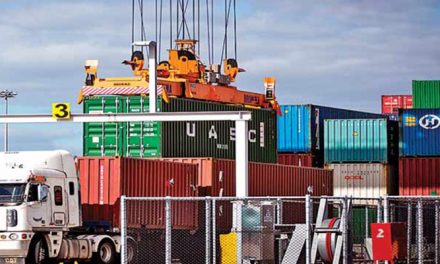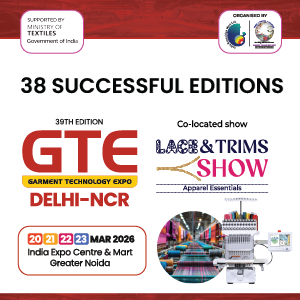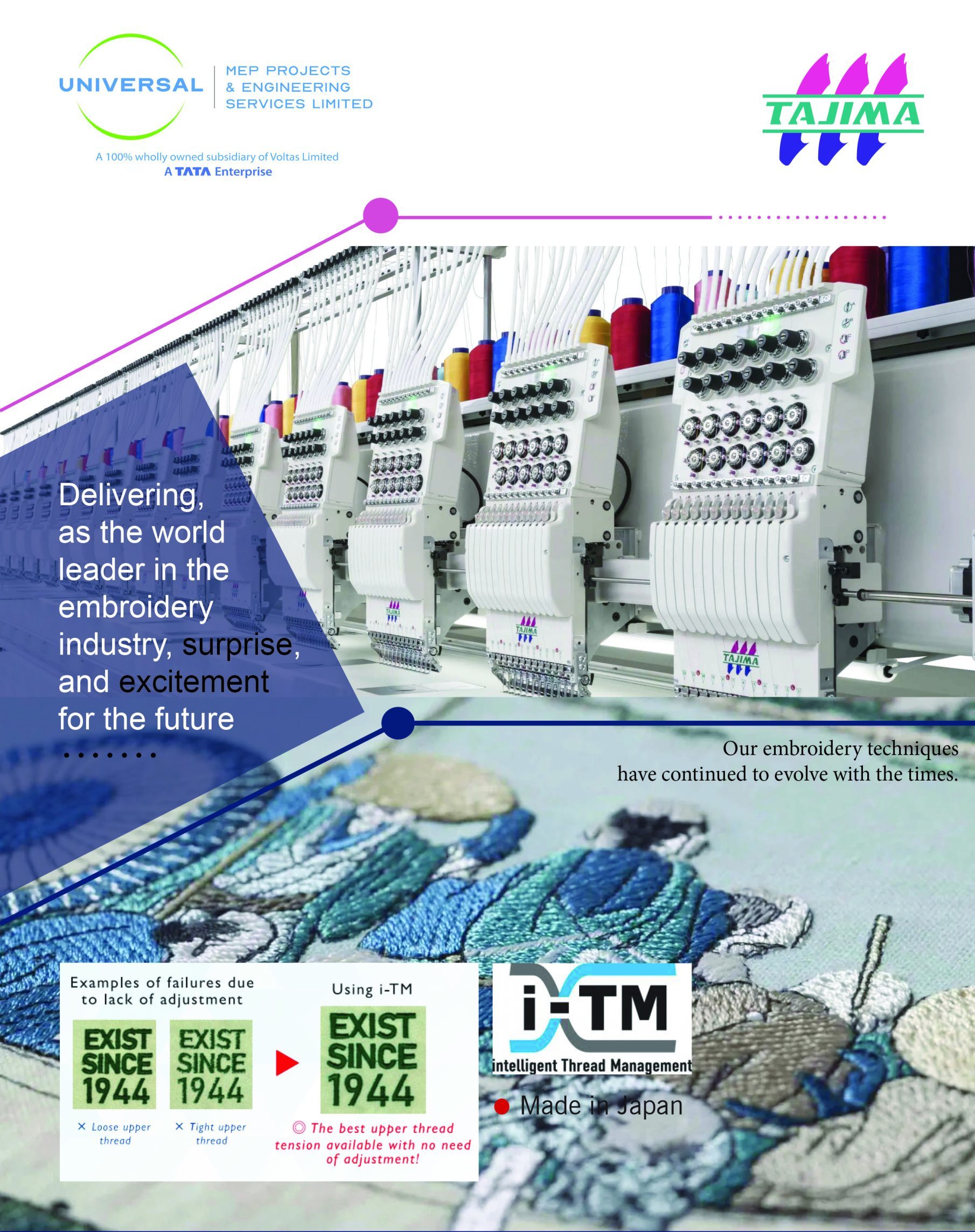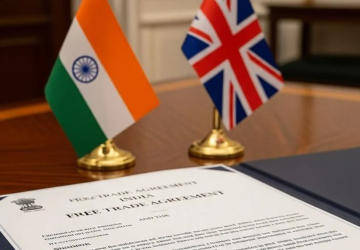 A big boost to India’s textile exports to the UK with the signing of a Free Trade Agreement between the two countries recently, envisaging duty free access. The agreement seeks to give India a level playing field, vis-à-vis competitors like Vietnam and Bangladesh. Besides it will help reduce trade deficit and increase employment. What is more, the FTA signed after three years of negotiations – will further strengthen India’s position as global apparel and textiles sourcing hub, “says Apparel Export Promotion Council Secretary – General Mithileshwar Thakur.
A big boost to India’s textile exports to the UK with the signing of a Free Trade Agreement between the two countries recently, envisaging duty free access. The agreement seeks to give India a level playing field, vis-à-vis competitors like Vietnam and Bangladesh. Besides it will help reduce trade deficit and increase employment. What is more, the FTA signed after three years of negotiations – will further strengthen India’s position as global apparel and textiles sourcing hub, “says Apparel Export Promotion Council Secretary – General Mithileshwar Thakur.
Data shows that the UK was the second largest market for Indian apparel valued at dollar 1.4 bn in 2024 – 25. It also means more investments in creating capacity to take over business from Bangladesh, given the Indian manufacturer’s lack of scale, an area where the government has to move in quickly. There is no textile manufacturing in the UK, another reason for more textile export items from India. Some consumer and food products have been excluded from the ambit of the deal. These landmark agreements will further deepen our comprehensive strategic partnership and innovation in both economies”, PM Narendra Modi had posted while announcing the deal.
The FTA signals areas where India would be willing to lower duty access for goods from the European Union and other countries with which it is negotiating trade deals, including the US.
The FTA with the UK is a significant breakthrough at a time when the world is struggling with Trump’s tariff signals and signals India’s intent to open avenues to push up its exports to other markets. It also puts pressure on other trading partners such as the EU to move forward with the trade deal that has been under negotiation for over 15 years.
Now, there are, however, signs that EU bloc may be keener than before on clinching an agreement. The UK deal was full of twists and turns since Mode and then UK PM Boris Johnson formally announced their intent in 2021. The agreement was finally sealed after Commerce Minister Piyush Goyal made two trips to London in the first week of May.
“This forward – looking agreement benefits our farmers, fishermen, MSME’s start-ups, exporters and aligns with India’s vision of Viksit Bharat 2047. It also supports the shared growth ambitions of both our nations, he said. Officials claim that there are concessions under the proposed carbon border adjustment mechanism with the bilateral investment treaty to be finalised in the coming months.
This is the most comprehensive trade deal ever entered into by India and will be the “gold standard for our future agreements” commerce Secretary Sunil Barthwal has said.
 According to the deal Indian tech and management professionals engineers and R and D advisers will be among the beneficiaries of easier visa regime. Easier mobility rules along with other service sectors aimed at Indian companies setting up shop in the UK are a critical element of the deal.
According to the deal Indian tech and management professionals engineers and R and D advisers will be among the beneficiaries of easier visa regime. Easier mobility rules along with other service sectors aimed at Indian companies setting up shop in the UK are a critical element of the deal.
The announcement of the signing of the FTA brought cheers among exporters. This was at a time when they were assessing their losses due to tariff – related uncertainly created by Donald Trump. Most exporters however are unable to make a detailed assessment as the complete schedule of tariff cuts but has only mentioned the broad categories.
According to reports, American buyers are demanding price discounts with reciprocal tariffs loom large. Apparel exporters are deeply concerned over the consequences of trade with the US. There are however buyers who are willing to share the higher burden. “Many US buyers and Indian suppliers have already reached mutual agreements to share any tariff impact reinforcing strong trade partnership and ensuring seamless supply chain, Ajay Sahai CEO and Director – General of Federation of Indian Export Organisation (FLEO) has said. Exporters hope the reciprocal tariff may be deferred, but the uncertainly about the proposed bilateral agreement (BTA) with the US persists.
Under the FTA deal, India has agreed to open procurement for British Companies, as it did for the UAE under the trade and economic agreement. Market access for government procurement will, however, be limited to non-sensitive central level entities and there is no commitment to allow companies from the UK to participate in state or local botches contracts.
Easier access for Indian business visitors and professionals was a key demand from the Indian side in return for lowering import duties on products of interest to the UK led by switch and automobiles. India has commitments under the environment chapter. Government officials said the agreement factors in the different development strategies of both sides and their natural priorities. In respect of labour, there is only a provision for co-operation and on institutional mechanism to discuss issues relating to skill development, capacity building and information shares with the caveat for state governments and local bodies. These chapters do not have dispute settlement mechanism.
Another thorny issue relates to intellectual property rights. India is actively engaged in discussions with the UK. But India will not yield to demands for data exclusively and patent term extensions as these could hinder production of affordable generic drugs within the country. This is India’s stance and cannot be compromissed, maintain official sources.
It has been agreed that foreign lawyers and law firms can now practice law, engage in arbitration matters and advise on international legal issues in non-litigious matters in India on the principle of reciprocity. Further they can practice transactional and corporate work such as joint ventures, mergers and acquisitions.
The Carbon Border Adjustment Mechanism (CBAM) to kick off from January 2026 could result in an additional burden of atleast 8-9 percent with the measure likely to be as high as 25-30 percent in certain other categories. This will negate any benefits from the FTA with the UK.
New Delhi is assessing the overall impact on the Indian economy and the option is to impose some sort of a tax on certain segments of imports including luxury goods with high carbon content. The assessment is being made by the commerce department and the finance ministry. At the same time, the environment ministry and the power ministry are also working on issues to address them domestically. The discussions are rather preliminary and no decision has been taken at present. If a decision is in fact taken it will target goods from the developed world which are seen to be arming with CBAM.
















